As a follow on from my visit to Bramshill a couple of weeks back, here are the results of the day’s filming with Aaron Cook. Special thanks to Aaron for putting me at ease (in what was a slightly scary experience) and giving a perfect insight into how I spend my summer days.
Pond Life
Saturday 8th August
A change in the weather forced a change of day for an outing with Doug. Our Priddy trip postponed, we stayed local and visited a new favourite pond of mine which I reserve the right to remain silent about to respect those who wish to keep it quiet.
There’s nothing to beat spending a whole afternoon at one pond, providing of course there is enough action to keep you busy. Although a little quieter than last time, there were still a fair few male Emperor to give some fabulous aeronautics.
Naturally there was a female or two present to keep the males competing. Unfortunately for them (and us) she was unreceptive to any advance, and showed it fiercely. Deadlier than the male indeed.
Around the margins there were a good population of Ruddy and Common Darters to keep us amused, and a high concentration of Common Emeralds representing the damselflies.
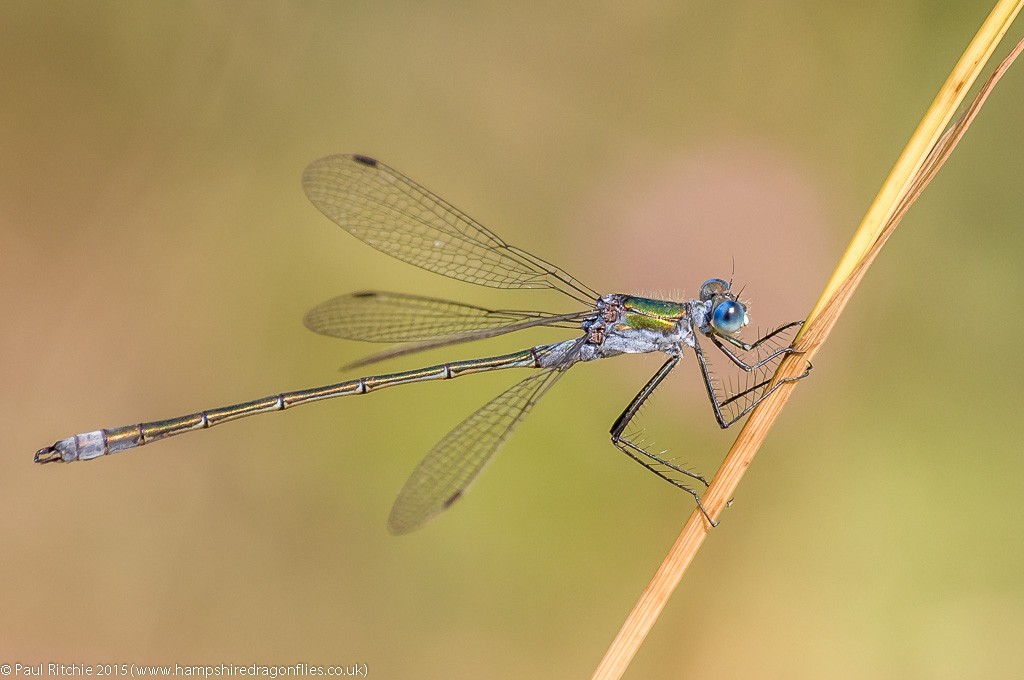
It wasn’t long before they were joined by a male Southern. He chose his small territory close to shore and was happy to show the Emperor there was a new kid on the block, and he wasn’t backing down.

This was primarily what we were here for. The Southern Hawker has long been a favourite for in-flighters, and they make a pleasant change from the Emperor.
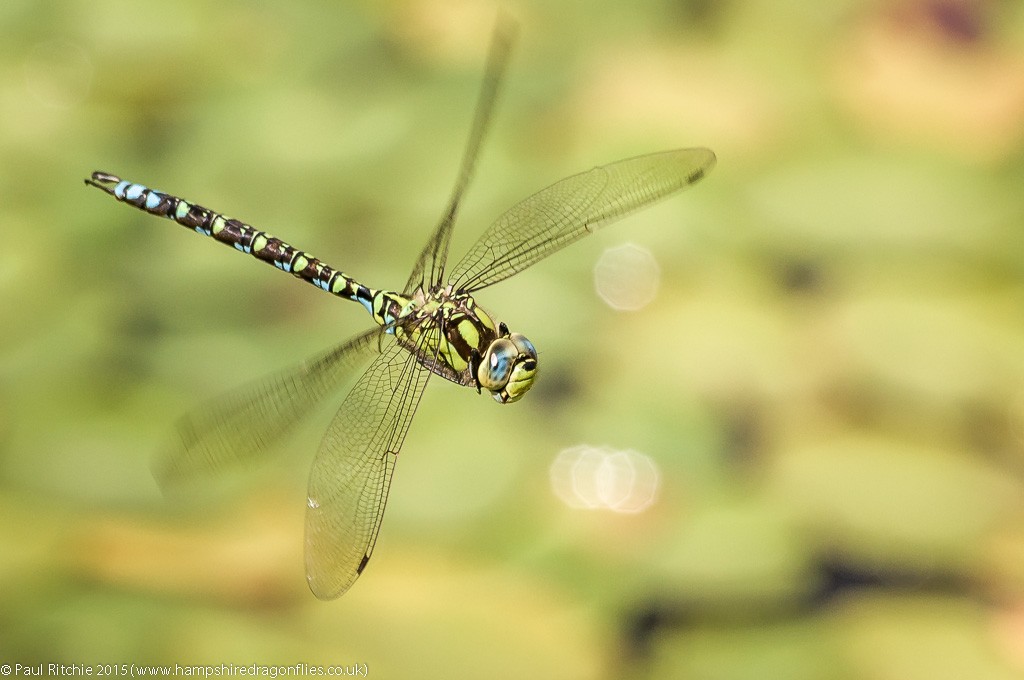
A most surprising and welcome visit was from a female Brown Hawker. Two visits by I’m assuming the same individual, but she needed somewhere a little quieter.
The Emperors were content themselves, and during one violent encounter a male was thrown to the water. Dunked. There can be varying results from a defeat like this; sometimes they are too weak to break themselves free from the surface tension, and other times they recover enough to nurse their wounds on a nearby perch.
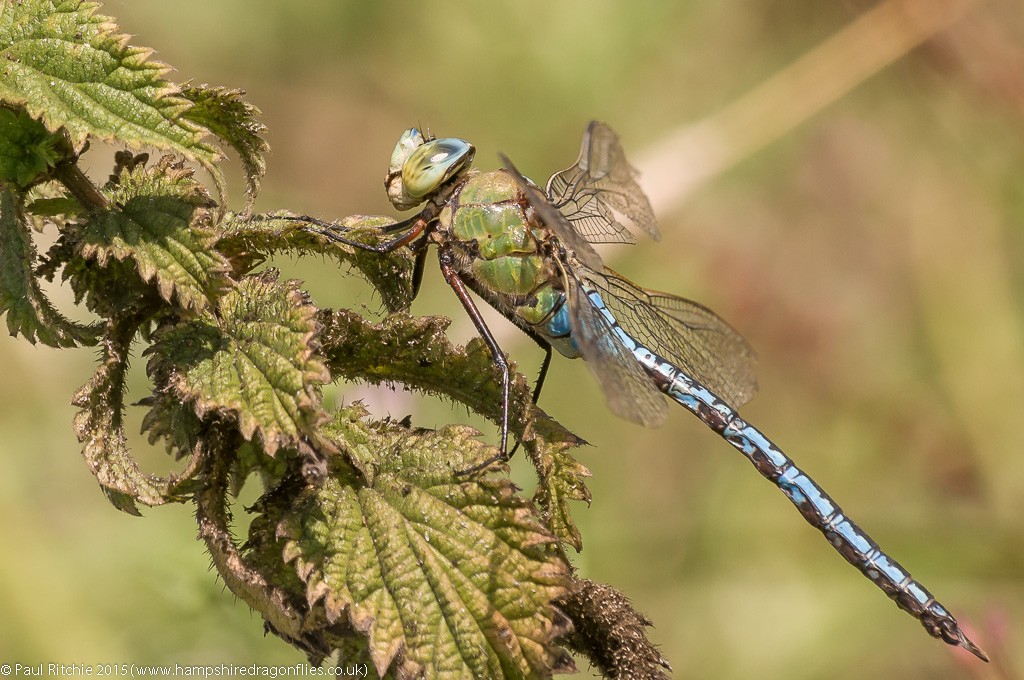
Thankfully they are a little easier to approach after a defeat, and you can see from this and other encounters he’s received substantial damage to his abdomen, wings and, if you look closely, has lost one of his anal appendages.
No more coupling for this poor chap.
The Southern disappeared for a while, allowing some time to pursue those beautiful little Ruddy Darters, which are so infrequent in the New Forest.
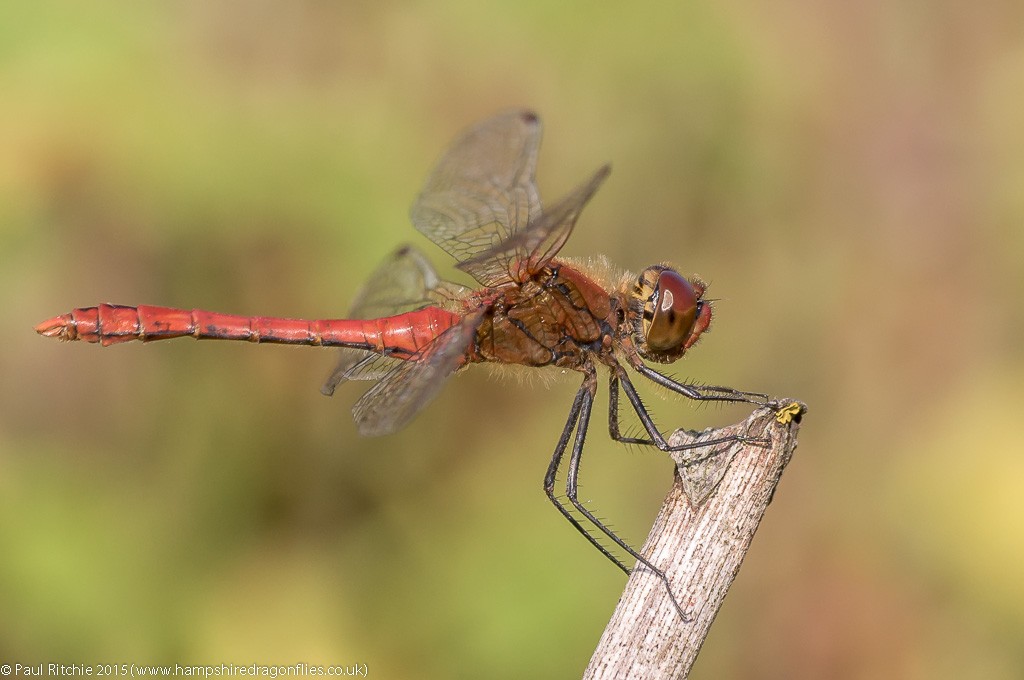
Another grand afternoon at the pond.
Kicking Back in Hawker Country
Tuesday 4th and Friday 7th August
Yes…it’s reached that stage in the season. That time when I can relax and waste several hours at one pond. It’s a privileged position to be in; and only arrives when I’ve seen all Hampshire species.
I had two to get; the Migrant and Moorland Hawker. Somewhat late, I bagged my first Migrant in Essex last weekend, and on Tuesday I had the most fantastic display of a female Common Hawker circling the pond at Ramsdown.
She was constantly thwarted by the resident male Emperor; a vision alone as he flew at 45 degrees to engage with her 20 feet above. The battle continued, and occasionally a male Brown Hawker got caught in the affray.
After a couple of reappearances she gave in to the bully. I hung on for as long as possible, hoping she would reappear, but on this day the pond shut early. Calling into Troublefield I at least bagged a Golden-ringed to finish off the day.
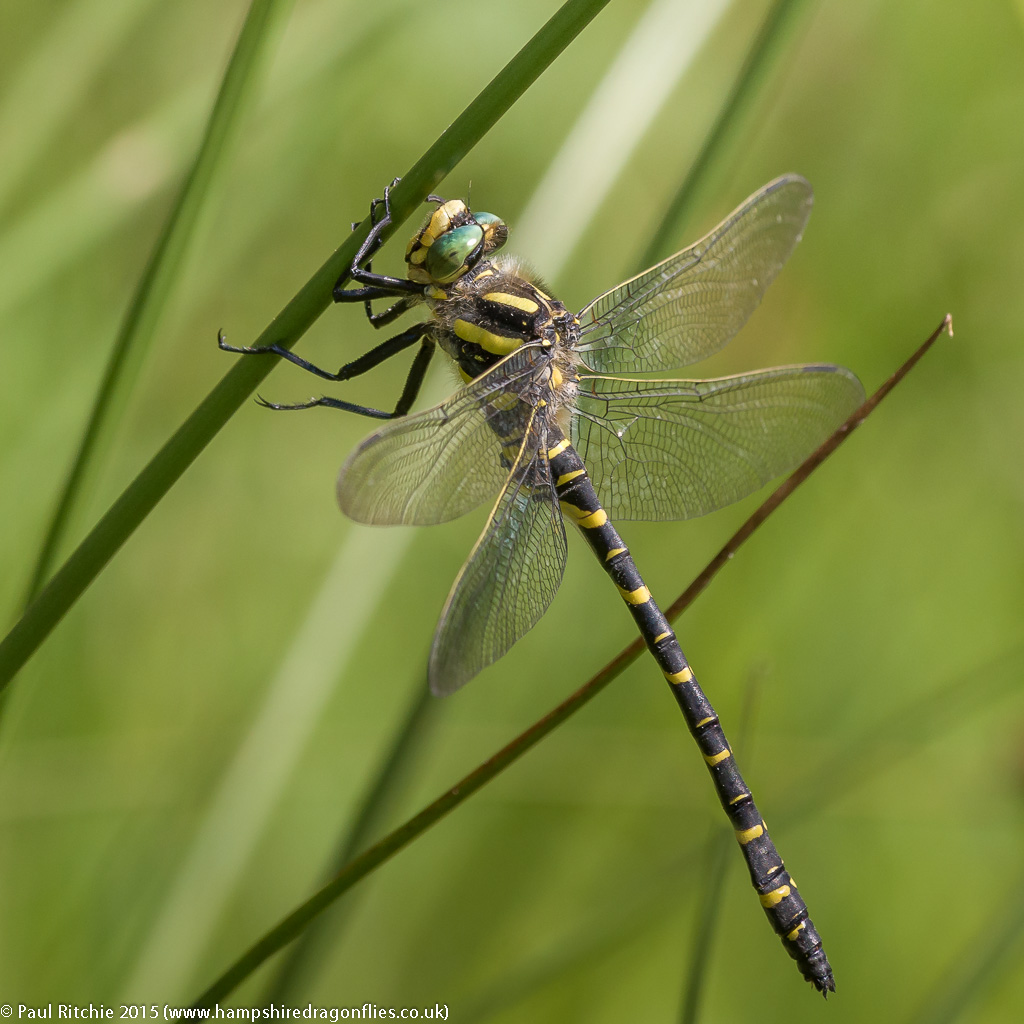
On Friday I started with the path at Town Common. As soon as I turned the corner a Brown Hawker rose to parry along the path, giving false hope that he’d rest close by. No such luck.
On my return I swore the same Brown Hawker reappeared to mock me. It was while I was searching high and low for him I found an immature female Moorland Hawker perched high in the gorse. Fair enough – might as well do the circuit.
Surprisingly there were still a few tattered Silver-spotted Blues within the heath, and the cloud cover meant the Emerald and Small Red were sheltering around the pond margins. So too were the Black Darters.
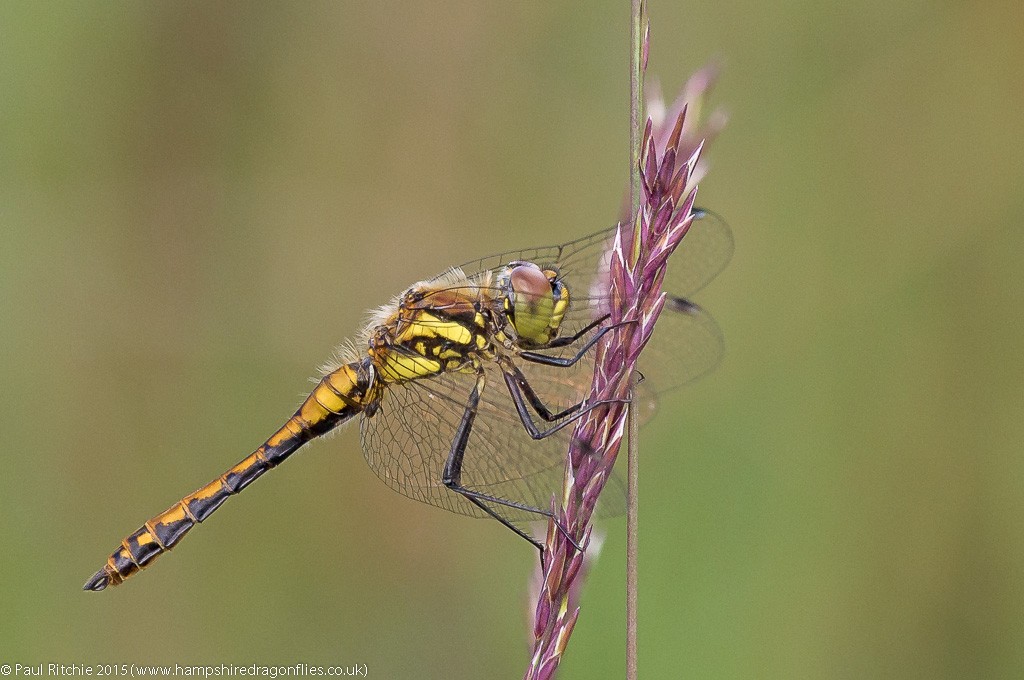
Regrettably I only saw one more Hawker, and that was a Brown who appeared from nowhere as I was attempting to grab a shot of a mating pair.
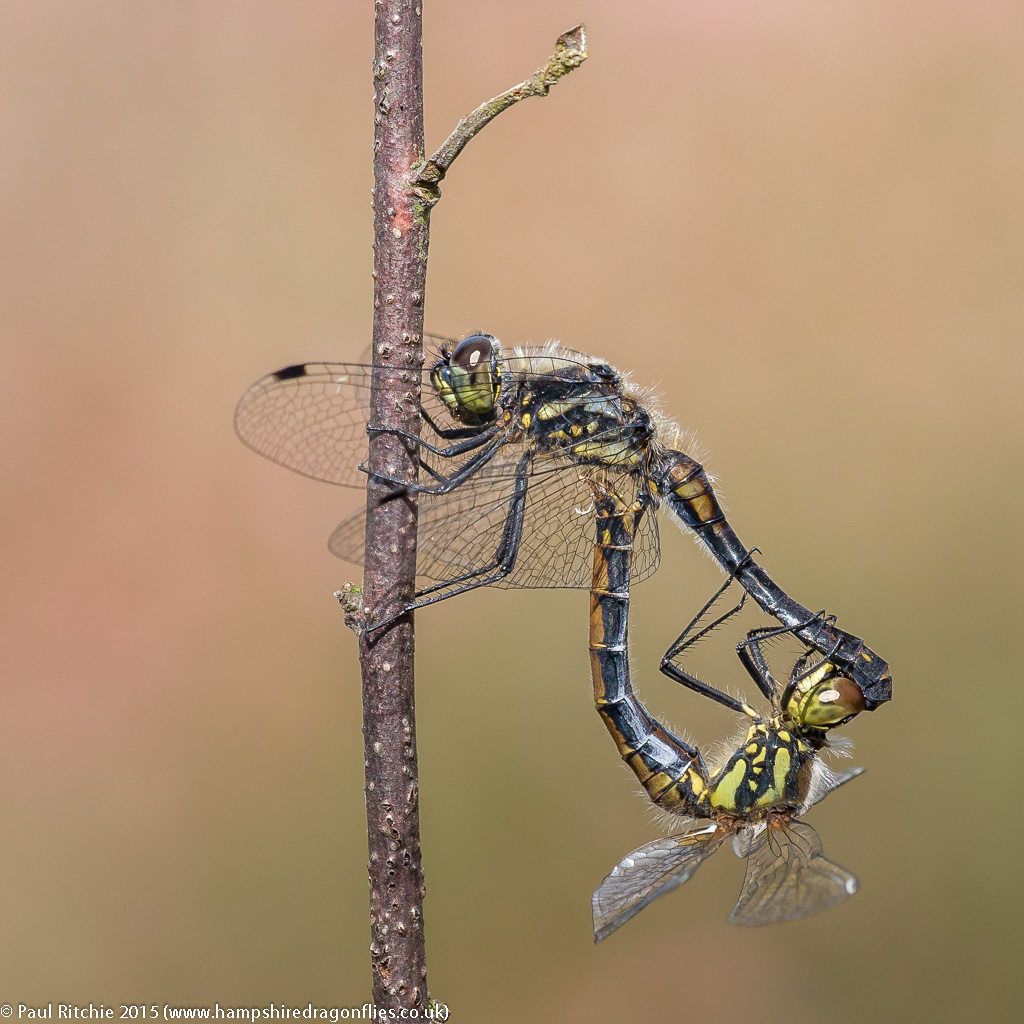
Over at Ramsdown I disturbed a Migrant in the clearing, and at the pond I was greeted by the sight of a male Moorland cruising low around the margins. I had the briefest time with him before the resident Emperor saw him and a Brown Hawker off. He was an antagonistic git, this one!
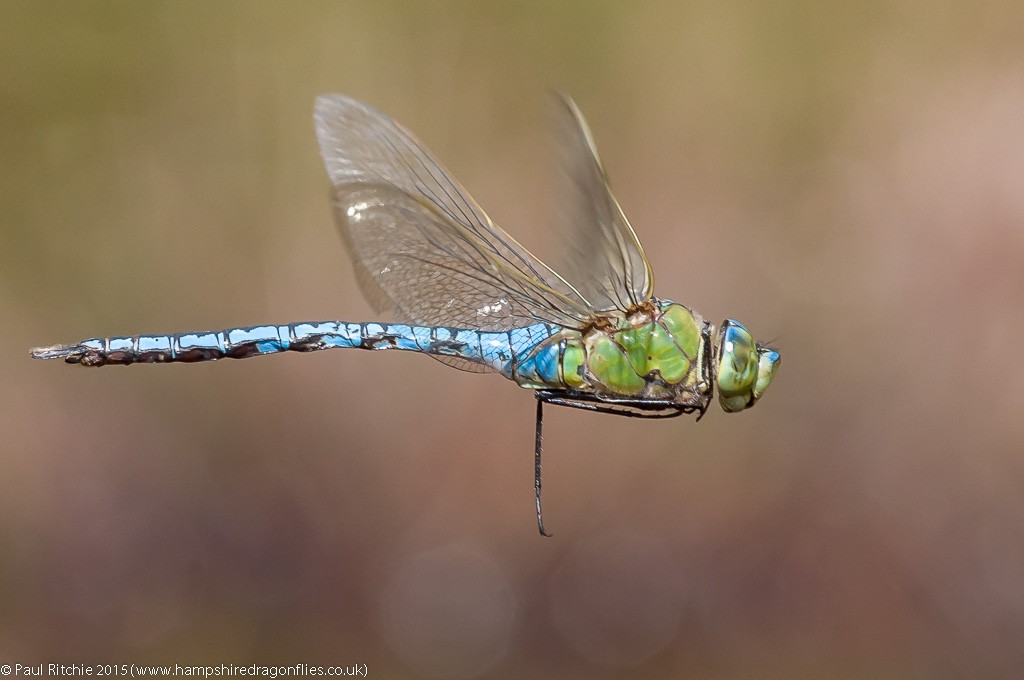
Robbed of my prize, I half-heartedly shot a few in-flighters just to keep busy. The Moorland returned and flew high for a short while before the Emperor repeated his dominance, and that was the last I saw of him.
Still nothing flying at the clearing, so I checked the heath pond where a solitary Keeled Skimmer joined the Black Darters and countless Common Emeralds. They at least are thriving here.
I hadn’t checked the hill pond for a month or so, and wondered if it was worth it. It was barely more than a muddy puddle but enough to grab the attention of a female Moorland Hawker.
Once again I was treated to the enthralling flight display as she followed a wide and high triangular path above the pond. After realising I wasn’t going anywhere she flew down, nervously scouting the puddle for the right place to lay her eggs.
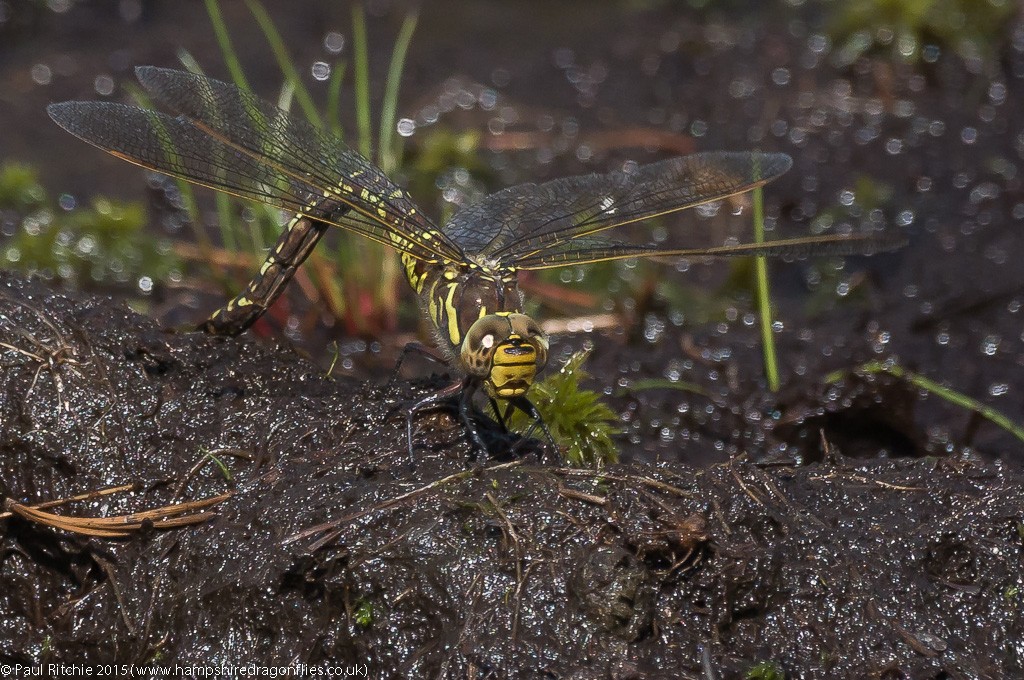
I kept as still as I could, having witnessed the shyness of the females on many occasions. The wrong move would have called an end to her labours and my enjoyment.
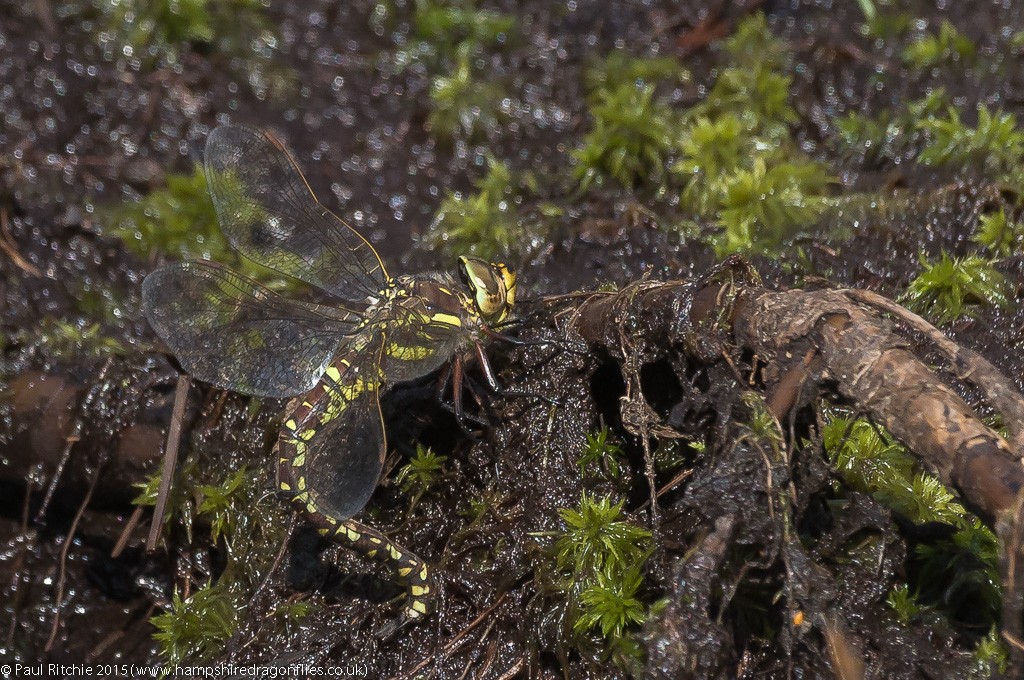
She certainly made up for missing the male earlier, and rounded the day off nicely.
On Cue
Sunday 2nd August
A few weeks ago while at Bramshill I bumped into a fellow who was intrigued at what I was up to. By no means the first time, as often when out in the field I get accosted by strangers asking what I could possibly be photographing.
I like to remain polite, but there are occasions when Mr. Hyde takes over and they are presented with sarcasm or pedantry; a favourite response being Pterodactyls, just to gauge their sense of humour. Thankfully the majority are fascinated and pleased to be introduced to a whole new world right in front of their eyes.
Shortly after my Bramshill encounter I received an e-mail from Aaron Cook asking if I’d be interested in participating in a short video about dragonflies. Knowing full well I have a face for radio and a voice best experienced when silent, I tentatively answered yes to the idea.
After a few weather-induced postponements we agreed to meet and give it a shot. Aaron was already set up on site as I arrived and proceeded to fit me with a microphone and direct a little dialogue, something which I was totally nervous about. Maybe I should have brought the other flask.
While I was wallowing in my wellies, pointing the lens at some Red-eyed hovering around the Lilies, I noticed a Small Red-eyed, the first I had personally seen here, but that’s probably due to me not being here last year at this time.
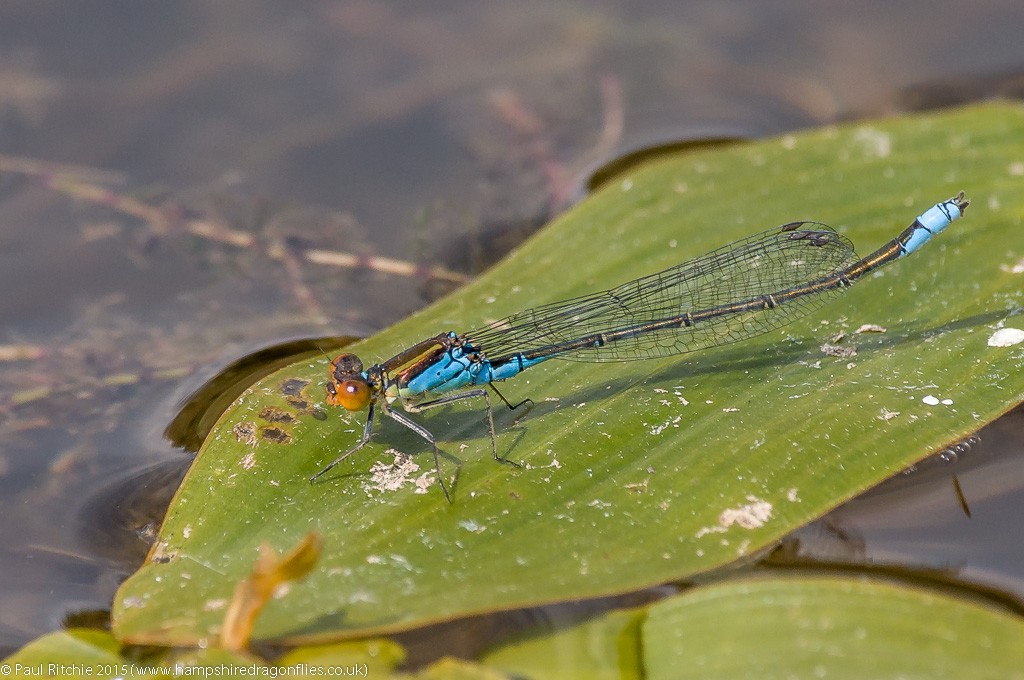
Our best opportunity came with a friendly and reliable Emperor. After checking us both out individually, he proceeded to put on a show for both our benefits, even hovering long enough for Aaron to capture him on screen.
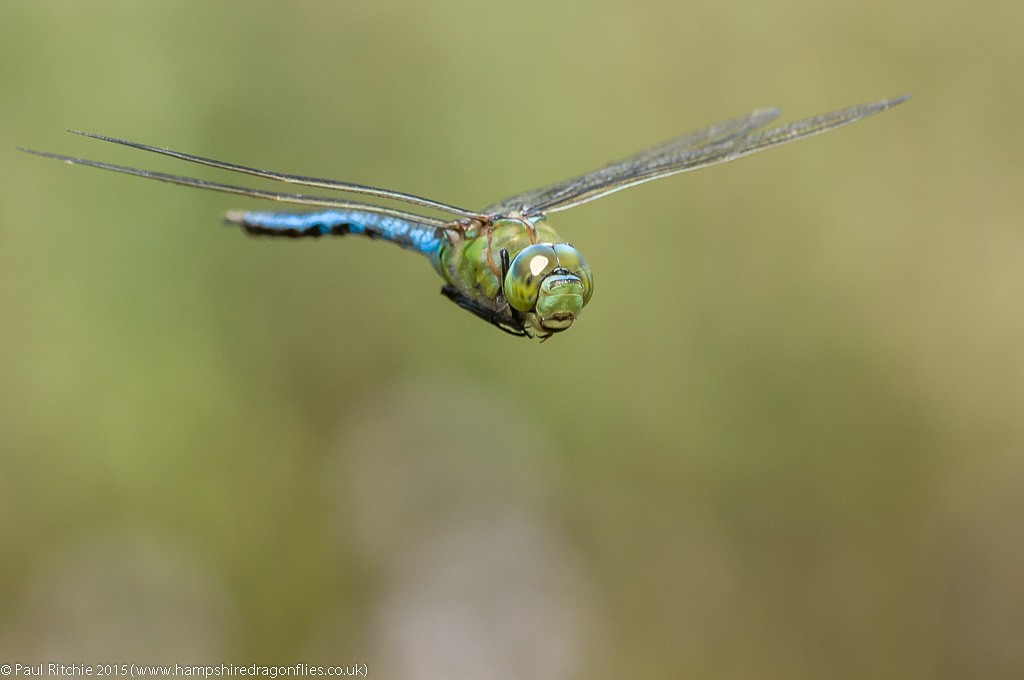
I was busy panning and predicting, shooting off a few but waiting for that ‘moment’. In the meantime nosy Common Darter provided a diversion
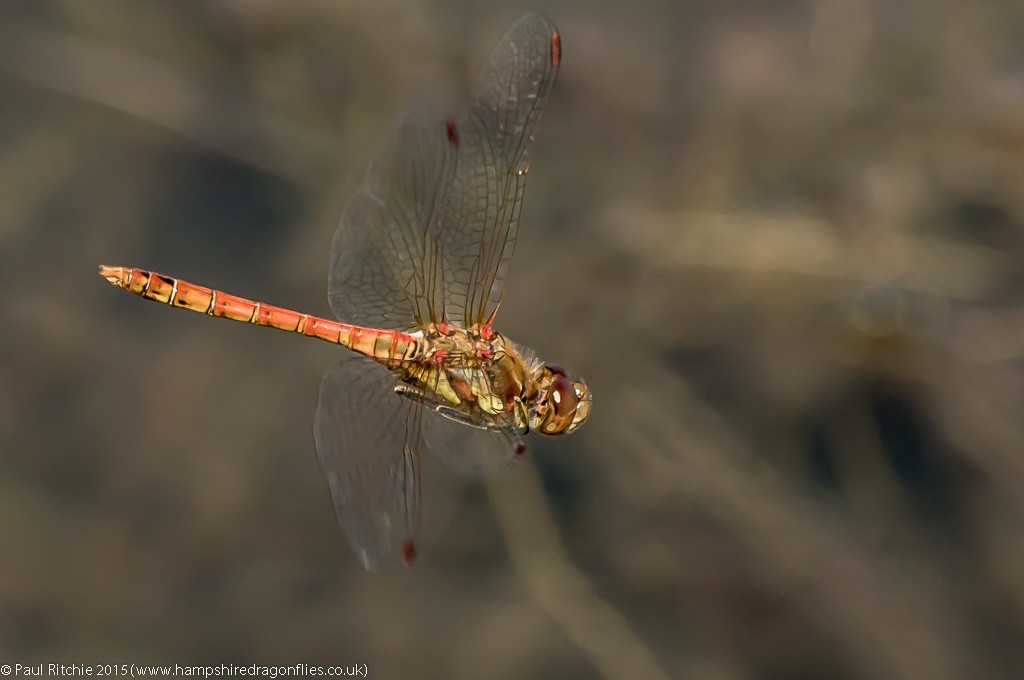
That ‘moment’ arrived when the Emperor approached close enough to capture the detail., providing me with one of my best in-flighters.

Aaron was a little surprised at how mobile you have to be to get the full benefits, yet I left out many of the pockets I normally include. Thankfully the shoreline had enough interest and opportunities to give him the footage he needed.
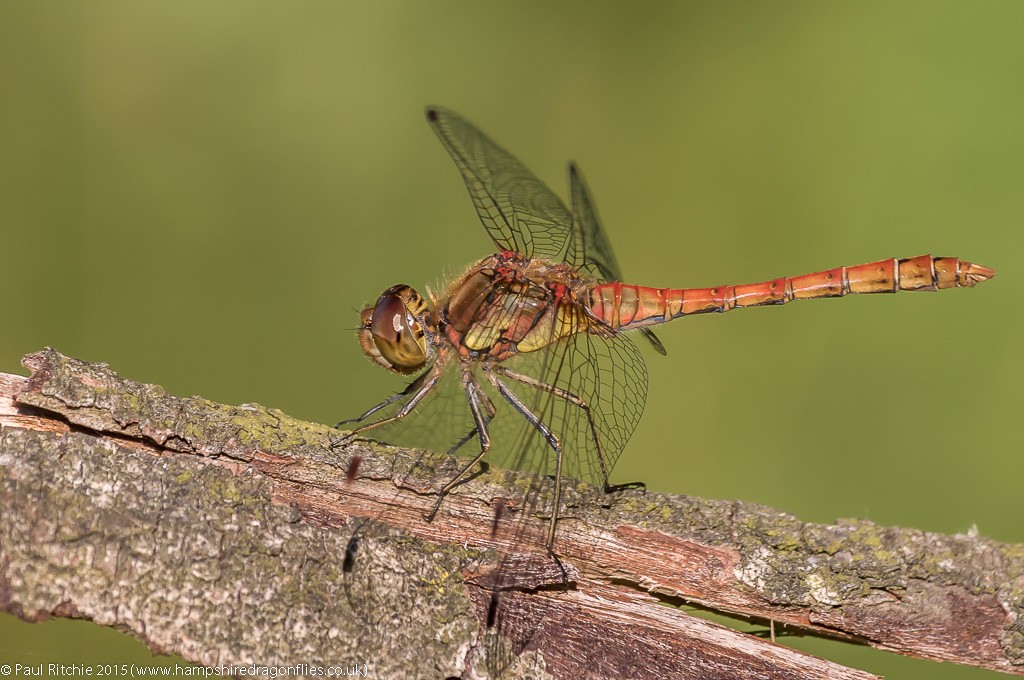
An interesting day for sure, and another where I took the back seat and learned many things about a different medium, but more about myself.
Scary!
Behind Blue Eyes
Saturday 1st August
A discussion on Friday night decided a road-trip was on the cards. An ideal opportunity for a ‘twitch’. Neil Phillips had announced the return of the Southern Migrant Hawker at Wat Tyler Park, a place I had avoided previously because I dislike ‘country parks’ and dislike twitching even more 😉
The difference here is, as with the Green-eyed Hawker, the continued residency of a species at a given site over the course of many seasons means it’s not exactly a twitch in the true sense of the word.
If you’re after further controversy, I prefer to call this beast by the standard European name Blue-eyed Hawker, not least because it’s given English moniker is confusing and non-descriptive. Besides, it winds up the status quo!
Wat Tyler was extremely easy to find and not as bad as I’d imagined. Sure, it was full of local families out for a day in the park with the expected inconveniences and high noise levels of happy (or indeed unhappy) children, but you could say the same about twitchers!
The key area was centered around the boardwalks and the ponds. Indeed, it was at the first boardwalk that we encountered our first by the crowd of observers aiming binoculars into the lower reaches of the reeds.
Anxious to explore a little, I followed a friendly regular who led me to the pool with the ramp where one was posed quite conveniently surrounded my several photographers. Naturally I joined in, finding a niche out of the way of others lenses, crouching down to get the best angle I could.
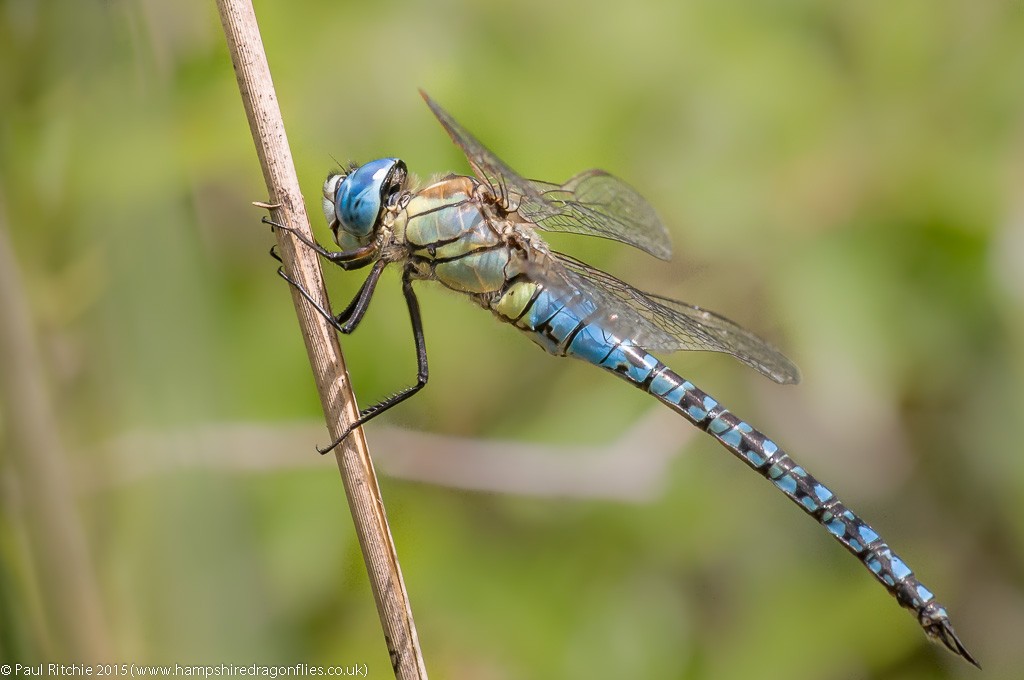
In the bag then! A beautiful species for sure. Surprisingly tolerant of nosy humans, as most rarities seem to be, he simply got on with his business until he felt it was time to explore himself. Now I could relax, and continued around the site, stopping frequently to observe the fabulous overhead display of sometimes up to three individuals at once.
The first one along the boardwalk had now risen and was giving a fine showing circling the boardwalk, sometimes flying along the path in similar curiosity shown by Southern Hawkers.
Over on the other side of the road is another short boardwalk lined with emergent plants populated with a range of butterflies. It was here we had our own fine display by a male basically showing off.
There was news of a few males on the small pond next to the car park, so I found a vantage point, at first already occupied but graciously passed on allowing me to attempt some in-flighters.
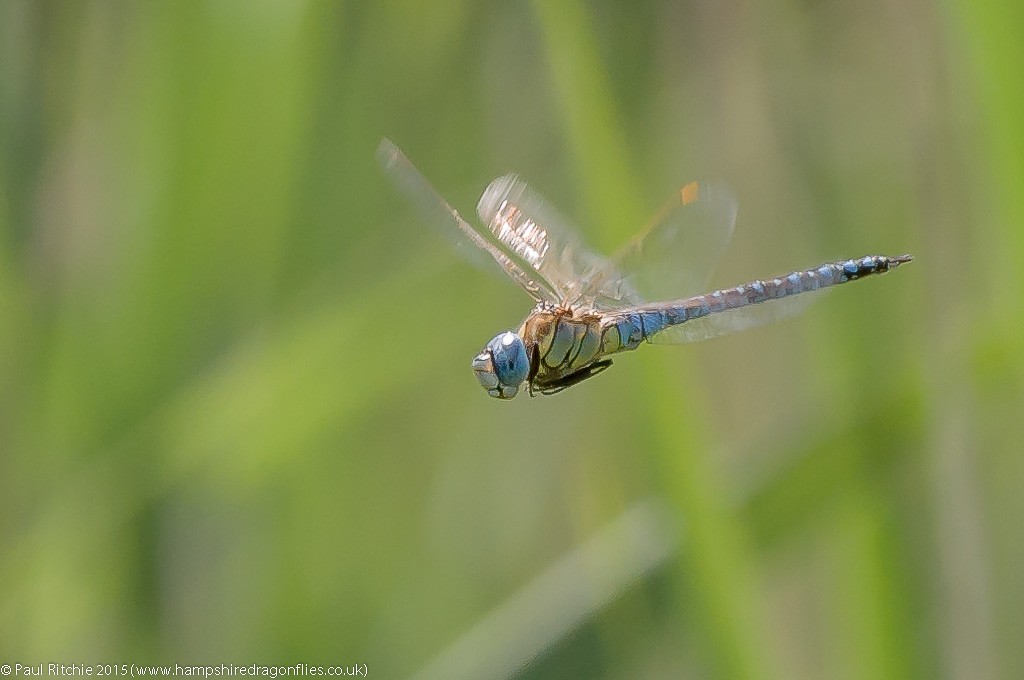
This pond I presume is the one which has initiated the stern warning regarding the surrounding reeds, asking people to keep to the paths and avoid destroying the habitat to get a better view.
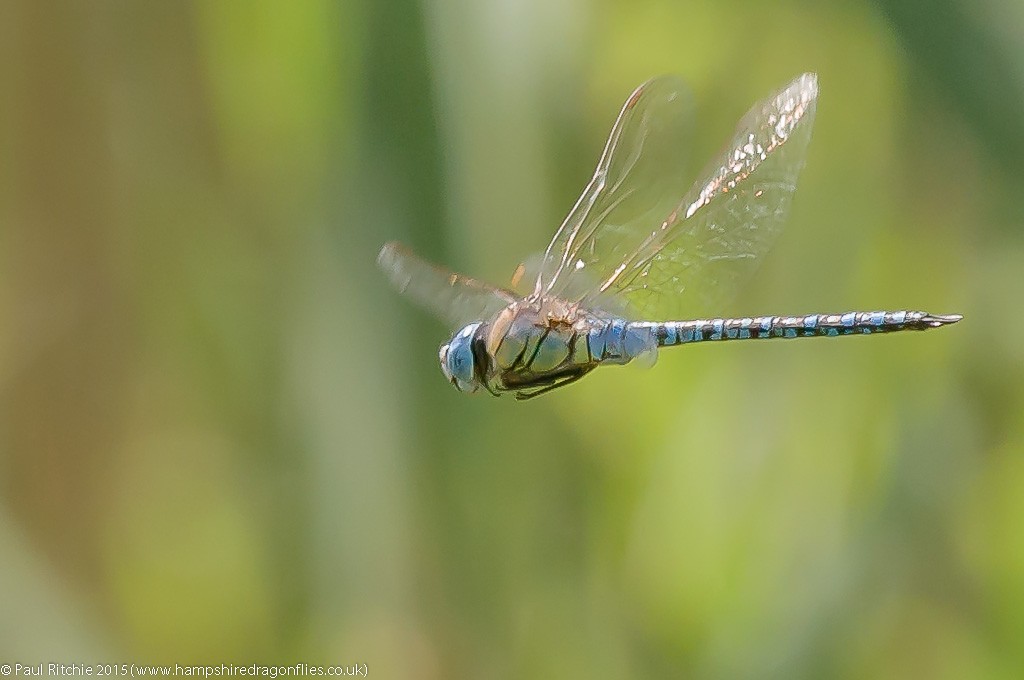
According to the book these almost dry ponds heavily choked with bull-rushes and the like are exactly the environment preferred by the Blue-eyed Hawker. However a choked pond is counter-productive to diversity, as was evident by the very poor populations of other odonata.
Besides the occasional showing of a Southern Hawker, a Migrant, an Emperor, a couple of Common and Ruddy Darters and very few Blue-tailed, the cupboard was bare. Some discrete management of these ponds will go a long way to increasing the diversity without driving off the Blue-eyed Hawker.
It will also allow observers to get a better view without resulting to environmental vandalism. Everyone’s happy, especially the dragonflies. There are several examples where this balance works.
Anyway, back to those Hawkers. After the first late morning flux of activity, further outbreaks became more sporadic. There were a few more overhead showings in the afternoon, with the boardwalk opposite offering the quietest experience and the best displays.
I even had a pristine Clouded Yellow fly through, and a patient Ruddy offered myself and Jeff, a fellow I’ve previously met at Latchmore, a welcome opportunity to round off the day.
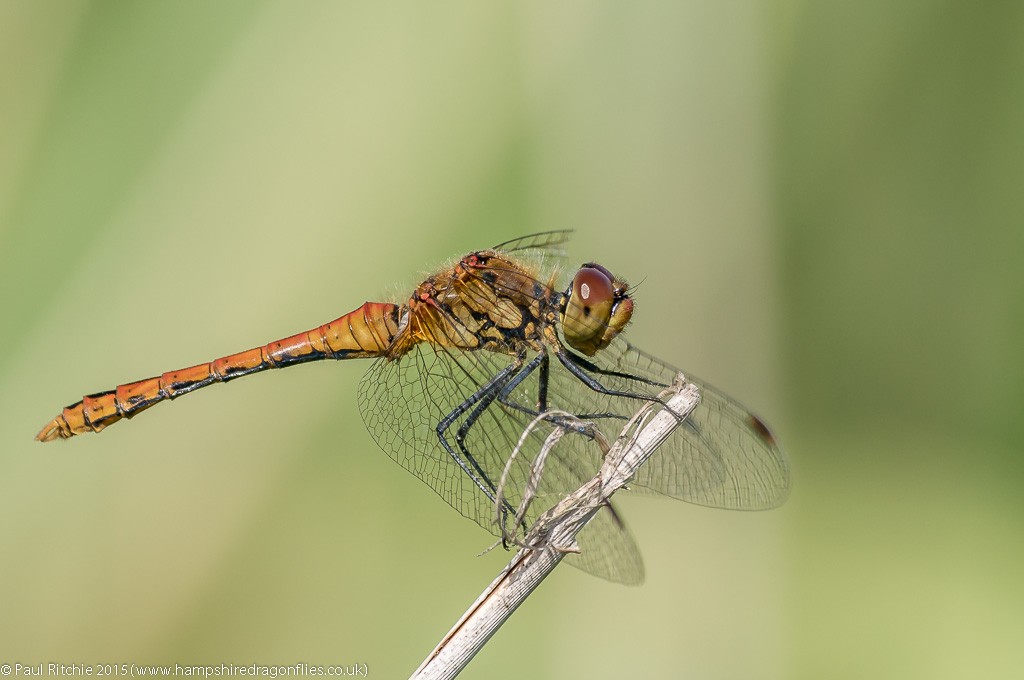
A new month and a new species. Here’s to August!
Old Friends
Friday 31st July
Jerry came down to bag a Golden-ringed or two, so we met at Crockford just before 10.00am. The car park was open a day before scheduled, but this was probably to accommodate the twitchers who had been there all week after a sighting of a Red-backed Shrike.
We didn’t stir much up on the walk in, but there was a male Golden-ringed at the basin which graciously posed for a shot or two.
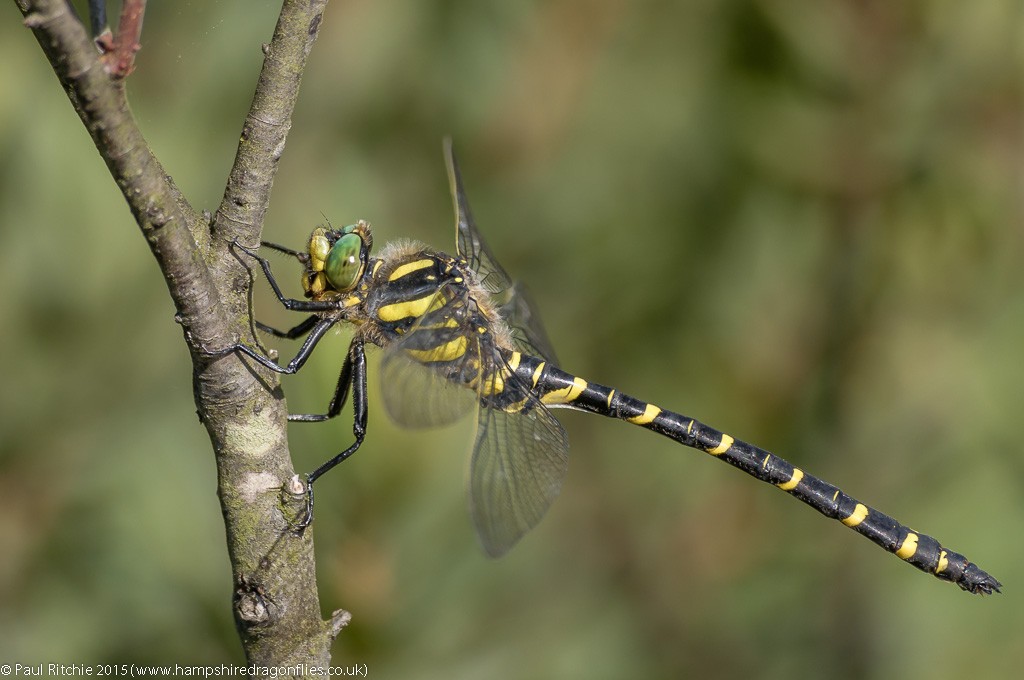
Annoyingly a large, black ribbon of cloud killed all activity on our walk upstream, but when the sun did eventually reappear things were still rather subdued. Numbers have been down all across the forest; not just in comparison to last year’s excellent season, but generally.
There were only a few Southern Damselflies, even fewer Small Red and most surprisingly only a few Keeled Skimmers. At this time of year you should expect to see hundreds of the latter, with at least half-a-dozen bullying any passing Golden-ringed.
As we were about to move on I realised I’d left my flask upstream, so I returned to retrieve it. By now the sun had broken through and there was a Golden-ringed holding territory on the channel while an Emperor paraded around the ford.
We decided to move on to Ober Water, a great favourite of mine and a place which Jerry was anxious to visit again. By now the cloud had dispersed and for the most part our walk was bathed in sunlight. A family of Buzzards calling in the trees and occasionally lifting on the thermals gave promise to some dragonfly activity.
Entering from Puttles for a change, we crossed the heath before finding the gap through the trees to cross the stream. What is usually a rather busy area was somewhat disappointing, and the small pool a little further failed to provide a Golden-ringed.
Even the usually busy section close to the bog outflow was very subdued, but at least we found some opportunities among the grasses and Bog Myrtle.

Turning inland at Rhinefield we found an obliging male Keeled Skimmer who kept us amused, and invited a little friendly competition to see who could get the cleanest green background.
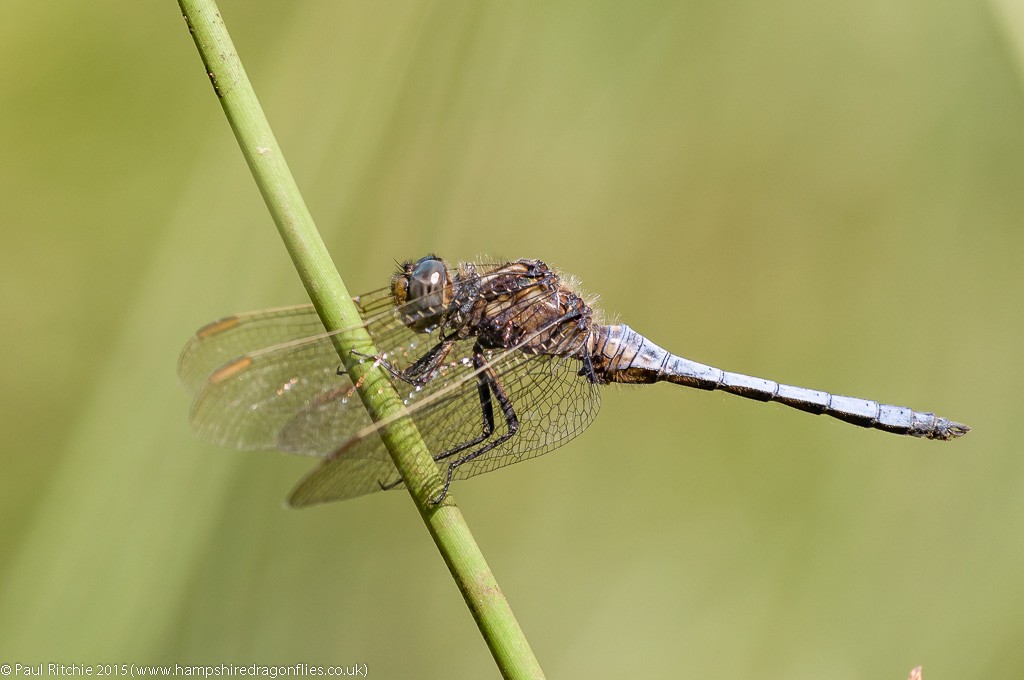
A convenient buttercup provided a little spotlight.
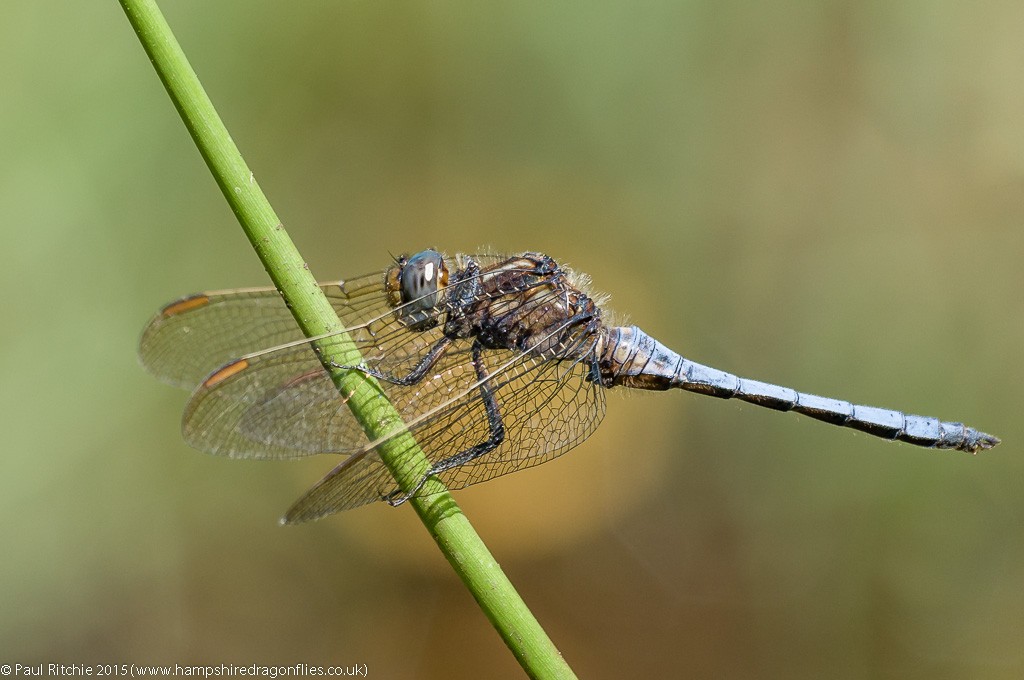
Other than these we had a couple of passing Golden-ringed, a few Beautiful Demoiselles and very few Southern Damselflies. In fact the only species in good numbers today were the White-legged, which this year appear to be thriving here.
Not a great selection then, but that only made each encounter more valuable. Good sites, good company, good day.
The pint afterwards was merely a bonus 🙂
In Search of Southern Harmony
Saturday 28th July
I had an itch which needed scratching; to find a pond with a patrolling Southern Hawker. Firstly, I needed to find a pond with water; the all-too-brief showers we’ve experienced (up until this point) hadn’t been enough to curtail, let alone reverse, the decline in our water levels.
I had just the pond in mind; not too far, reasonably sheltered and hopefully with enough surrounding activity to provide enough opportunities should my wish be unfulfilled.

Thankfully these opportunities were borne out by a very good showing of Common Emeralds both along the shore and in the surrounding meadow.
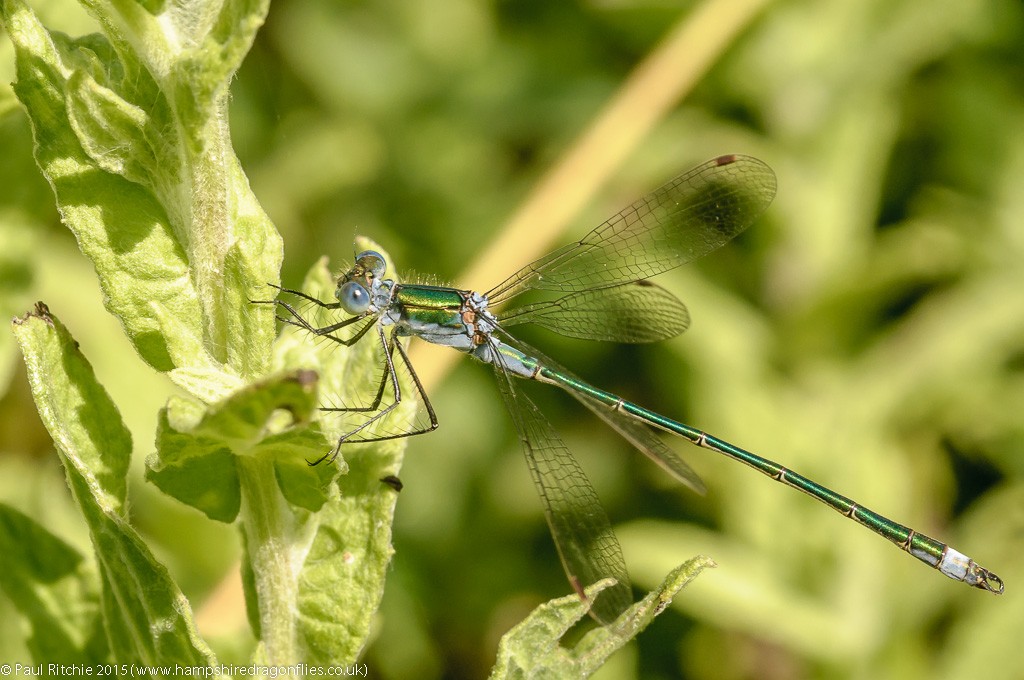
We had to wait for any decent spells of sunshine to kick-start some over-water activity, so I busied myself around the margins. An old and tattered Four-spotted Chaser was hanging on in there, holding his own against a few maturing Common Darters.
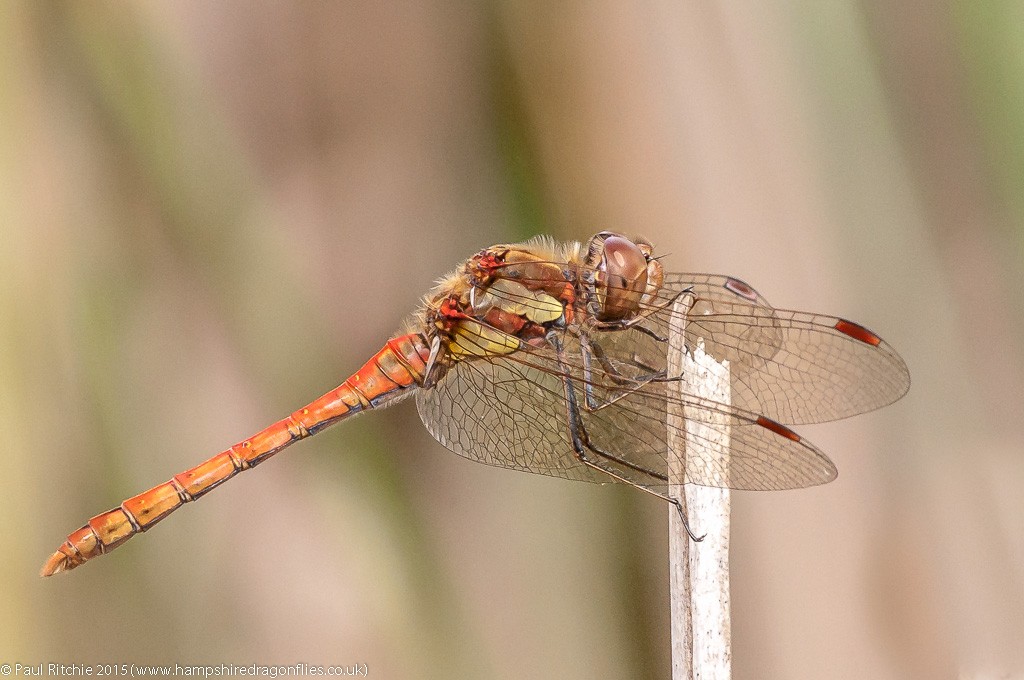
My attention was grabbed by another darter, this one noticeably smaller and a much deeper red.
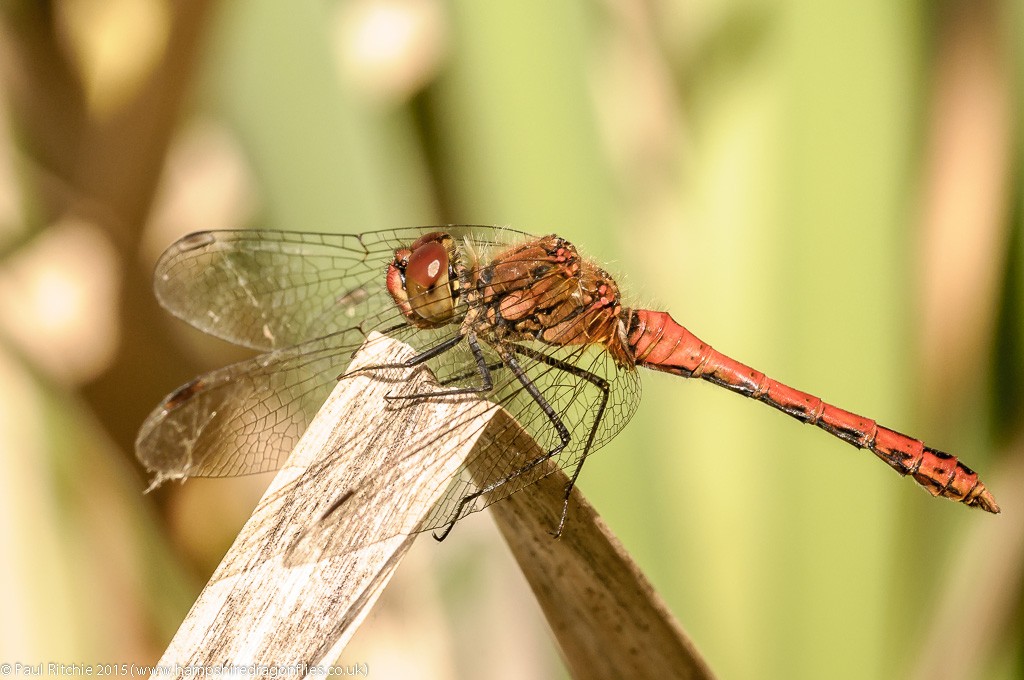
A bonus finding Ruddy Darter here, their being rather local, and usually only in small populations in the New Forest – in stark contrast to the swarms found around the Thames Estuary. Finding a reasonably local guaranteed population other than Badminston or Keyhaven is something to be celebrated.
Turning our attention to the skies we noticed a substantial break in the clouds approaching, certainly enough to wake up the pond. Sure enough, after five minutes the first male Emperor appeared, followed by a female and another male, making for some natural aggression.
The winning male failed in his attempts to lure the female away from ovipositing, so he decided to pick on another.
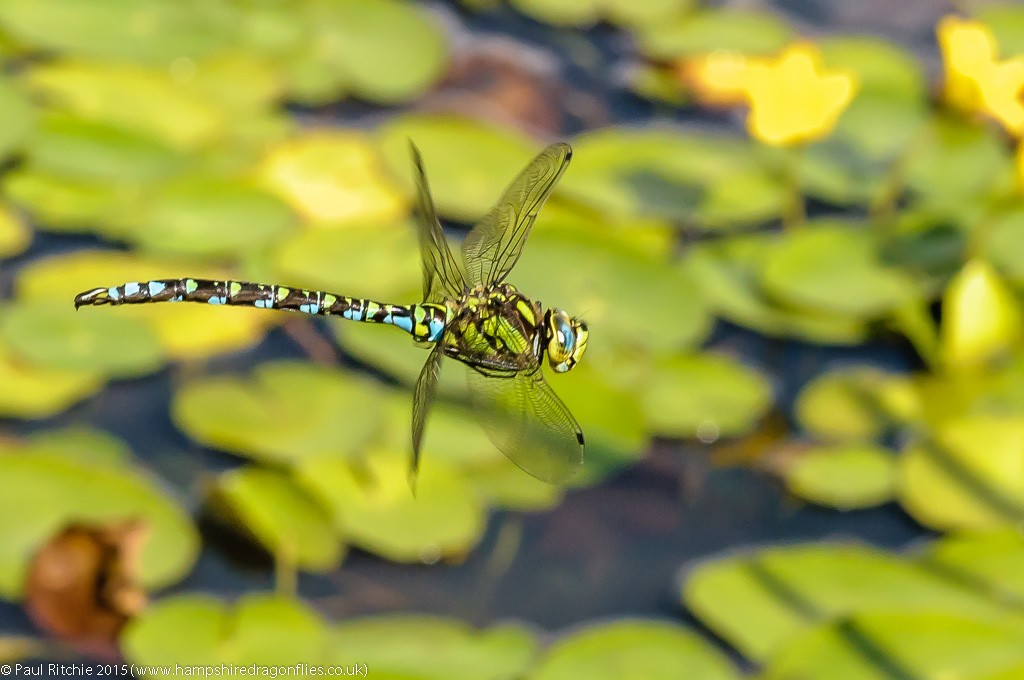
He lost, and skulked away to the other side of the pond while I proceeded to enjoy his victor’s presence and indulge in some in-flight opportunities.
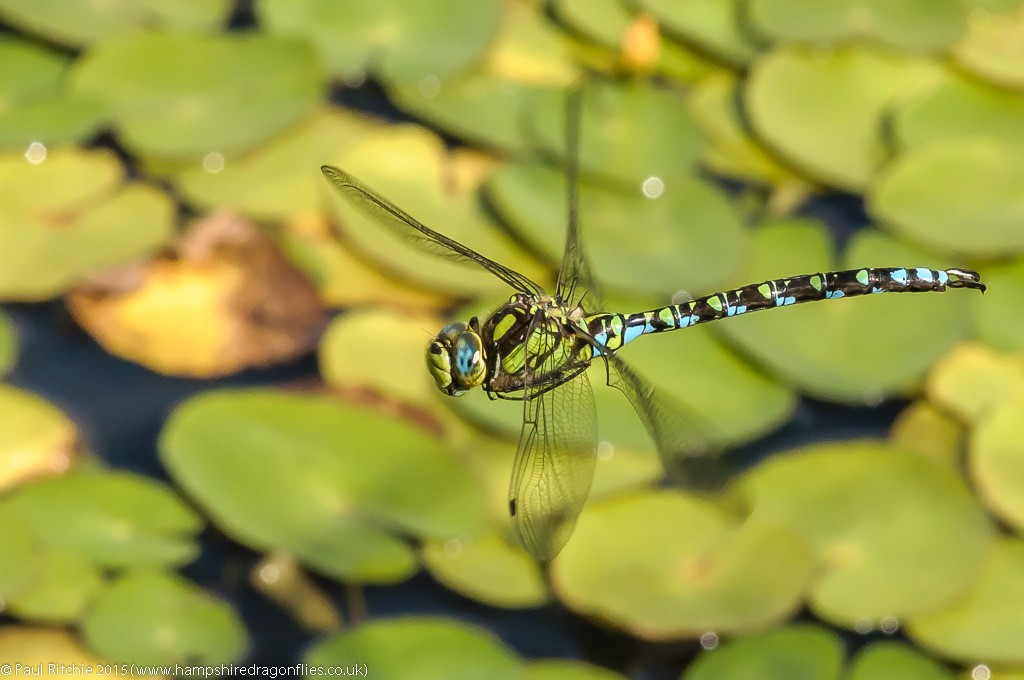
He stayed close and very low above the Lilies, weaving in and out in a youthful display of dexterity, which along with the obscuring bank-side vegetation made for some challenging captures.
Just what I hoped for, and just what I needed!
One-Hundred-And-Eighty
Thursday 23/07/15
Where are the dragonflies? The butterflies seemed to be in their element. Bees, Flies, Beetles etc all enjoying the warm breeze. Ideal time for hunting & feeding, you would have thought? At Pennington a light blanket of cloud wasn’t going to provide anything over-water, but the surrounding foliage should have been buzzing.
Unfortunately not the case. Very few damsels. The Demoiselles were letting the breeze take them as if they didn’t care where they ended up. The (very) occasional teneral Common Darter rising, no Black-tailed Skimmers – normally hardy – to be seen. No Emperors – not even a female ovipositing in the peace.
Even the rides – irritatingly overgrown – where devoid of the usual basking Common Darters or maturing Hawkers. Yet the butterflies were plentiful and were seemingly enjoying themselves.
On to Crockford then. Surely the shelter would reveal a few treasures? Sadly not. No Hawkers, Chasers, Skimmers or Darters around the margins on the way in, and only a female Keeled in the heather around the basin.
The walk upstream did produce a few Beautiful Demoiselles, Small Red and Southern Damselflies, but not one Golden-ringed. I’ve often stated that if you can’t photograph a Golden-ringed at Crockford then you might as well give up!
Of course the statement does require their presence.
At 1.30pm the sun made a brief appearance; enough to delay my leaving and give it another shot. A few Southern Damselflies braved the water for all of fifteen minutes until the cloud rolled in again.
There were pockets of blue sky surrounding this barrel of gloom. Perhaps another location might bring forth results, so I decided to try Badminston as a last resort.
The drive over saw sunshine, but by the time I arrived the cloud arrived again. At least there were some Black-tailed Skimmers here; seeking solace in the grasses along with the occasional Emperor, Common Darter and ever-present Common Blue Damselflies.
The heavily-reeded section of the original pool had the best water display I’d seen all day, with several damsels acting naturally, a brief passing Emperor, more Common Darters and some obliging Ruddy.
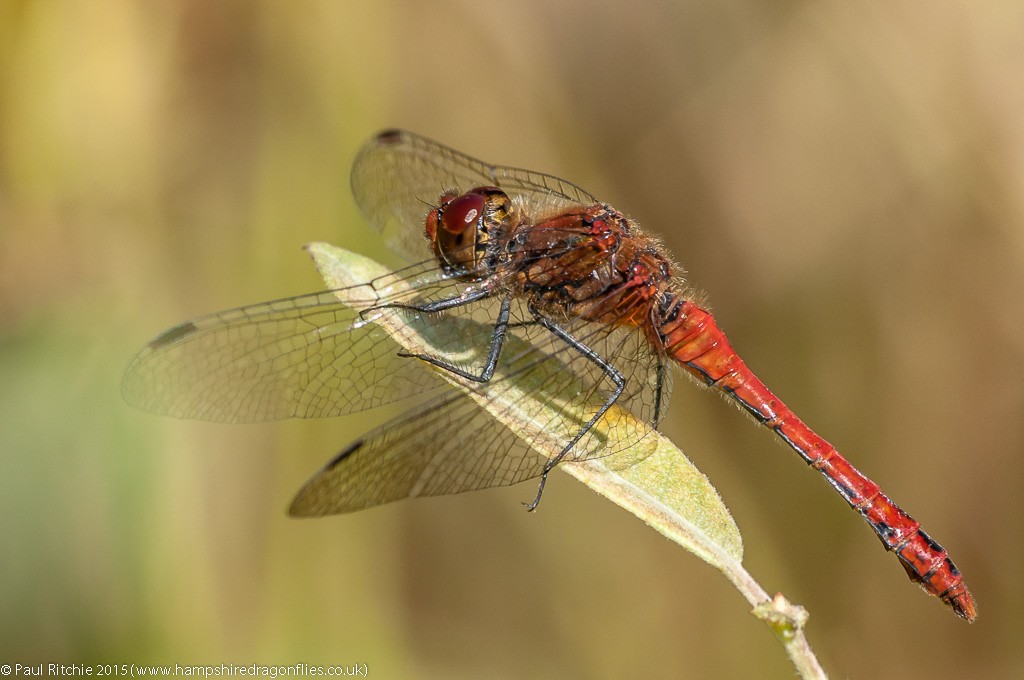
There were also plenty of Common Darters hiding out in the grassy corner.
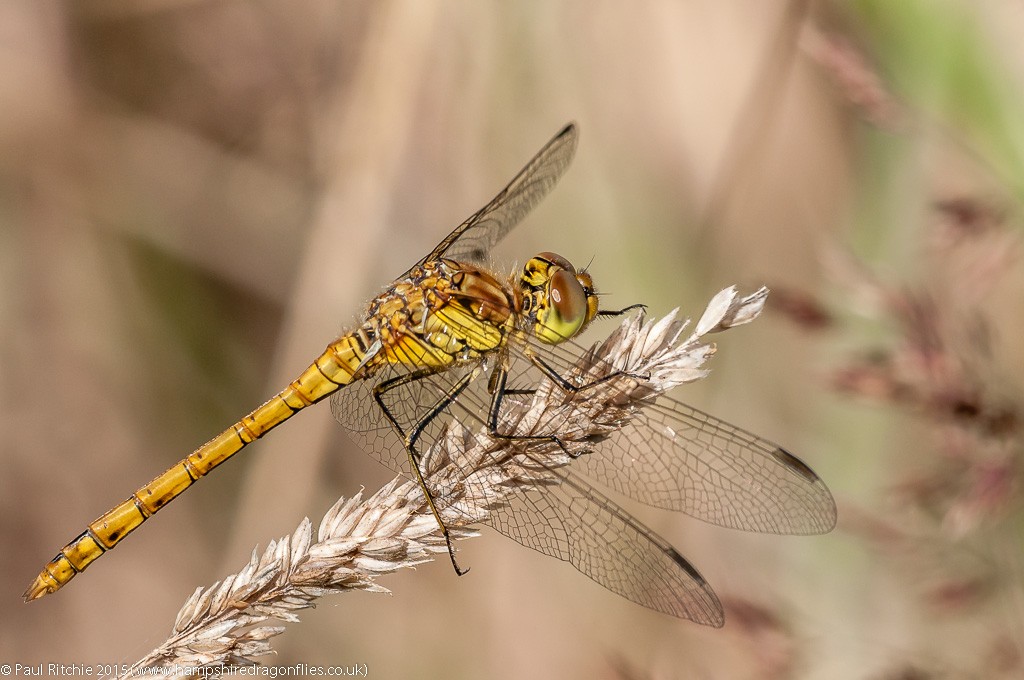
I did have a brief glimpse of a Southern along hawker alley, and back at the lake the reappearance of the sun had brought forth a little action over the water, with a couple of male and a female Emperor and some Black-tailed Skimmers.
However it was on my way out that I came across a male Red-veined Darter basking on the last fishing stand, rising a couple of times at my presence before disappearing for good.

Three Darters then to rescue the day, and right at the end of what turned out to be very hard work!
Only One Can Ober
Tuesday 22nd July
No-one – least of all the met office – knows what the weather is doing at the moment; only that it’s doing it consistently. The promise of some sunny spells was enough to get me out there, disregarding the fact I’d totally failed to factor in the wind. Or maybe I didn’t care?
Of course in a breeze like this there wasn’t going to be much going on, but there was enough along Ober Water to make the walk enjoyable. I didn’t see any Scarce Blue-tailed today, but they don’t like it too breezy.
Only a few Southern, and a fair scattering of White-legged skirting the bank low down and sheltered. The Beautiful Demoiselles weren’t bothered; more concerned with battling it out for females.
So too were the reasonable number of Keeled Skimmer.
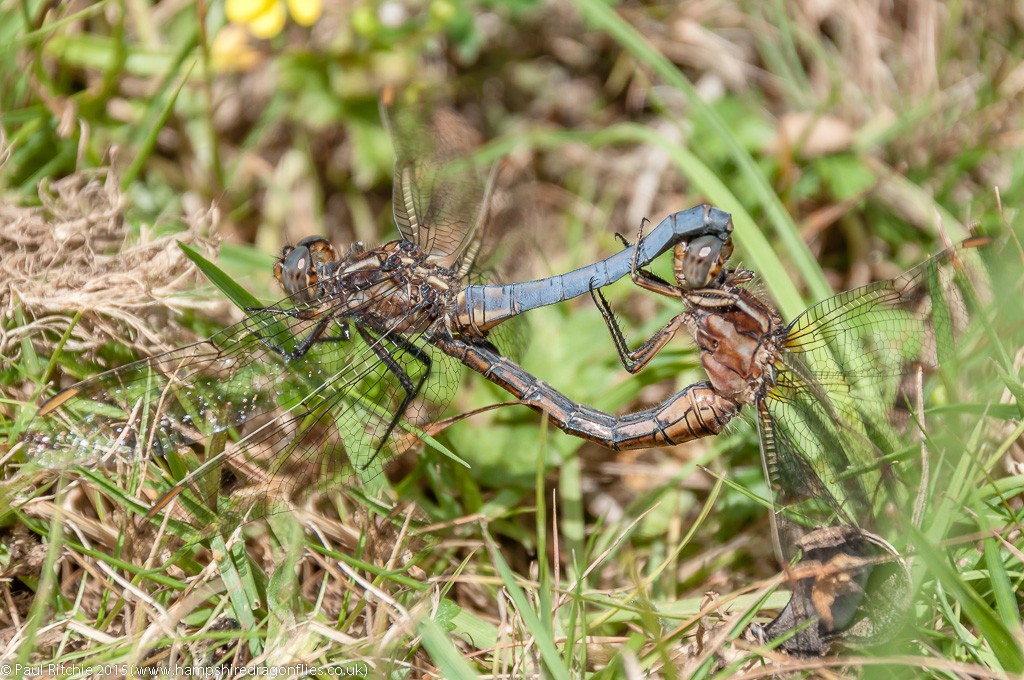
One nice surprise today was they dazzling flash of a passing Kingfisher – the first I’ve personally seen along here, although it’s highly likely I’ve missed plenty!
The flush leading up to Rhinefield wasn’t as populated as my last visit; no doubt due to the majority being dry, leaving just a few boggy sections which were easy to navigate.

Back through the grasses to the stream and even here the damsels were few & far between.
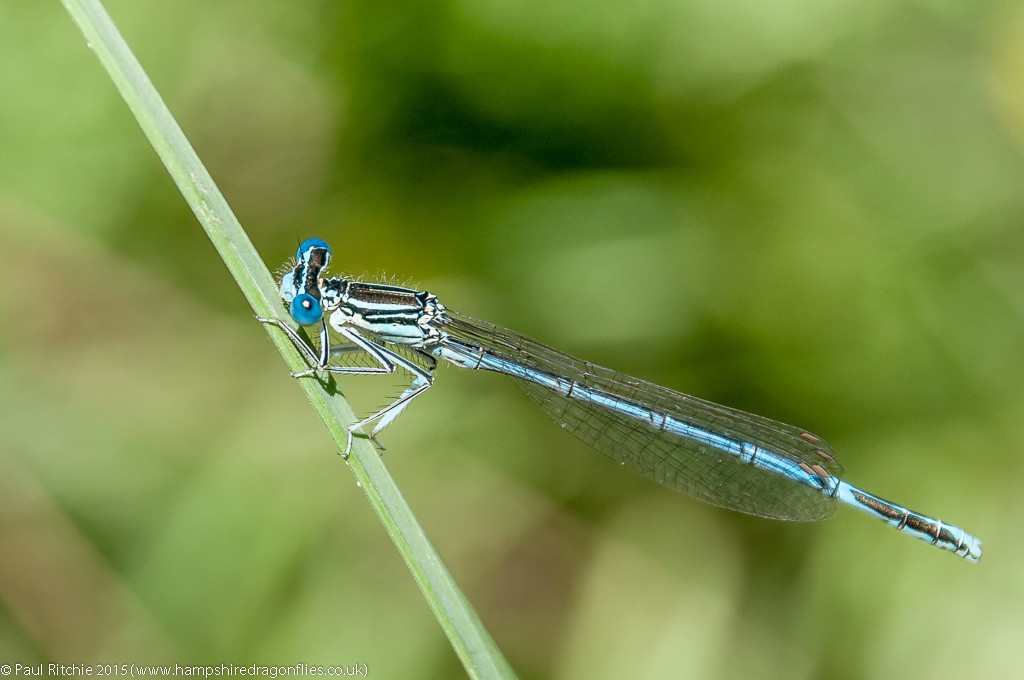
At least the Small Red were still showing good numbers at the foot of the bog. Just the two male Keeled Skimmers and just one male Beautiful Demoiselles along this usually busy small stretch.
Continuing my quest to delve a little deeper, the dry conditions allowed me to navigate along the other shore where a sheltered and shady section revealed my first patrolling Golden-ringed, while back at the reed bed I had my second, this one a little more obliging.
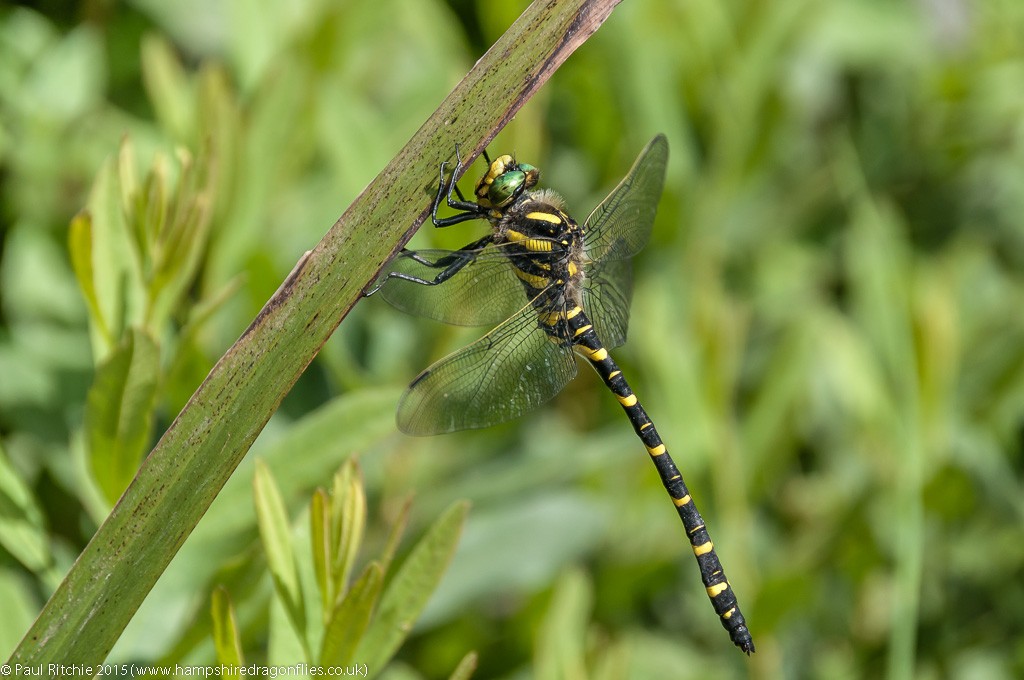
I saw one more briefly back upstream before sitting down for a while to attempt one of the patrolling Keeled Skimmers.
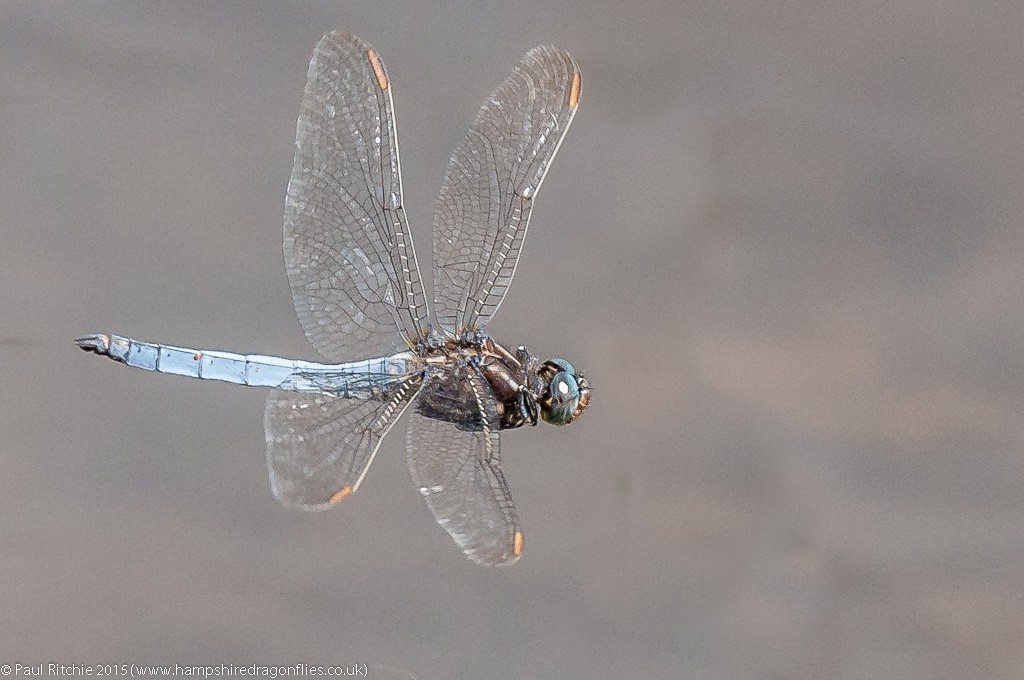
Not the best day at Ober Water then, but there’s rarely a day I come home disappointed from what is always a wonderful stroll to take whenever the weather can’t quite make up it’s mind.
By Appointment
Sunday 19th July
We returned to Swanwick for a couple of hours on Sunday; hoping to grab some more Southern Hawker sightings, but any photo opportunities would be better than nothing.
Despite being warmer, it was a little more subdued than Saturday. Still not much on the dipping pond, but the centre lake had a Common Darter holding court at the goose clearing.
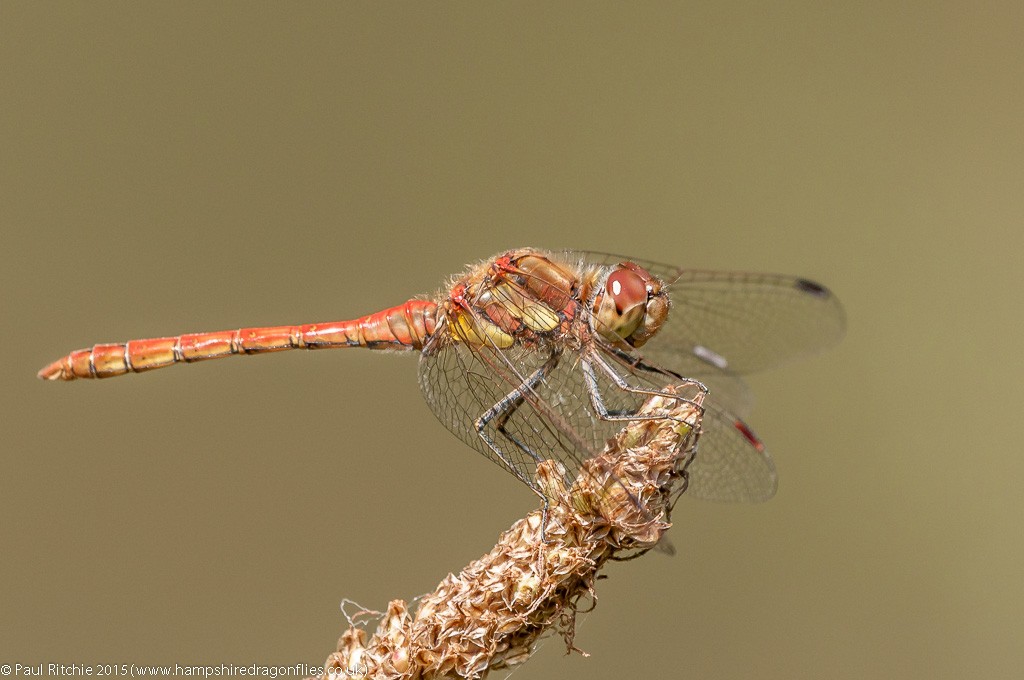
Tom’s Lake had an Emperor and a few Black-tailed Skimmers patrolling the Lily Pads right out in the middle, and the grassy area was still lacking the usual numbers of Blue-tailed, but I couldn’t wait to get to the quadrant, where – true to form – there were a couple of female and a male Emperor hawking the grasses.
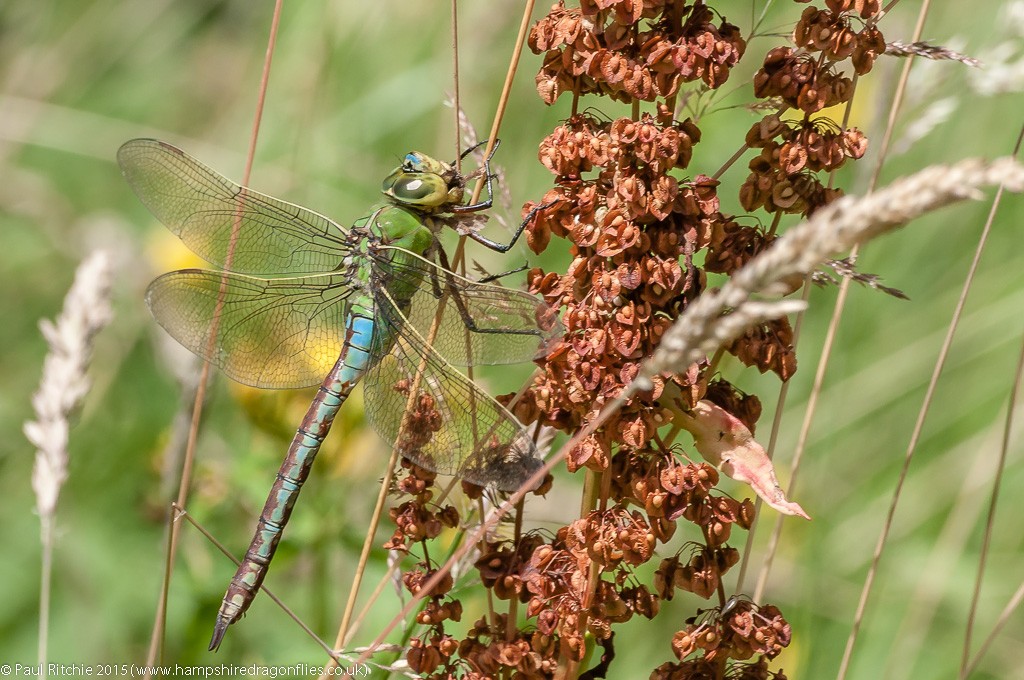
Just watching them was worth the trip alone; majestically gliding low along the tops of the grasses, picking off tasty morsels on the wing and perching when they chose the larger portions.
A stroll to the meadows revealed more Emperor rising from the grasses, disturbed by my passing. The dog pond still had those tatty Broad-bodied Chasers, but the quadrant had the best pickings.
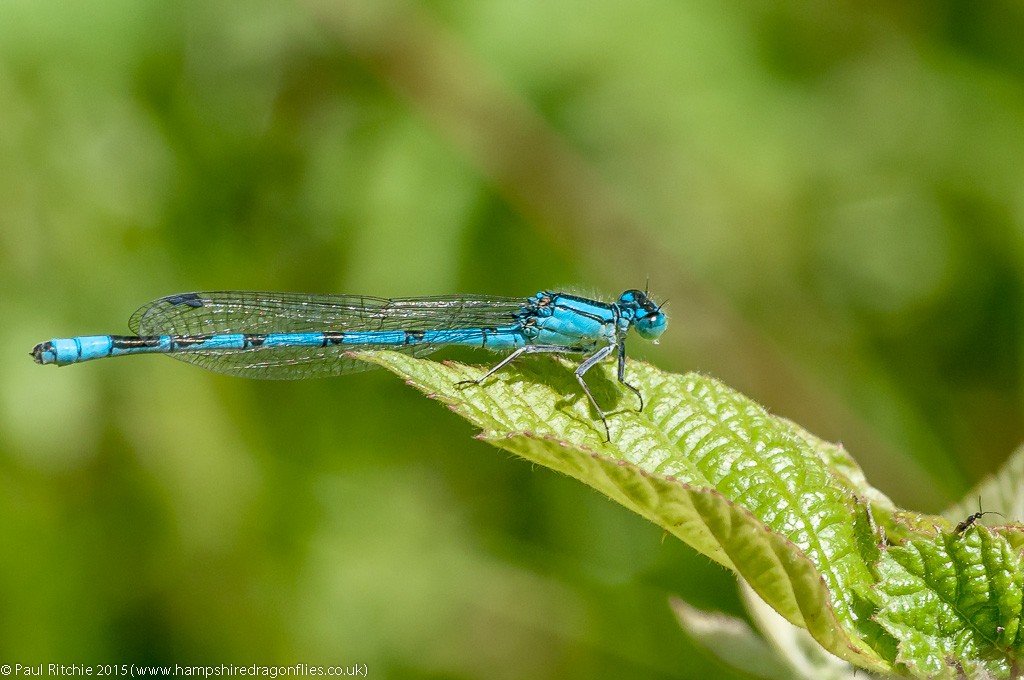
Those Emperors were a joy though. Fond as I am to watch their magnificent acrobatics over water, a meadow offers a different view. You can get among them, marvel as they slowly approach you, circle you, race towards their prey with exceptional acceleration, and test your stealth as you seek out their perch.
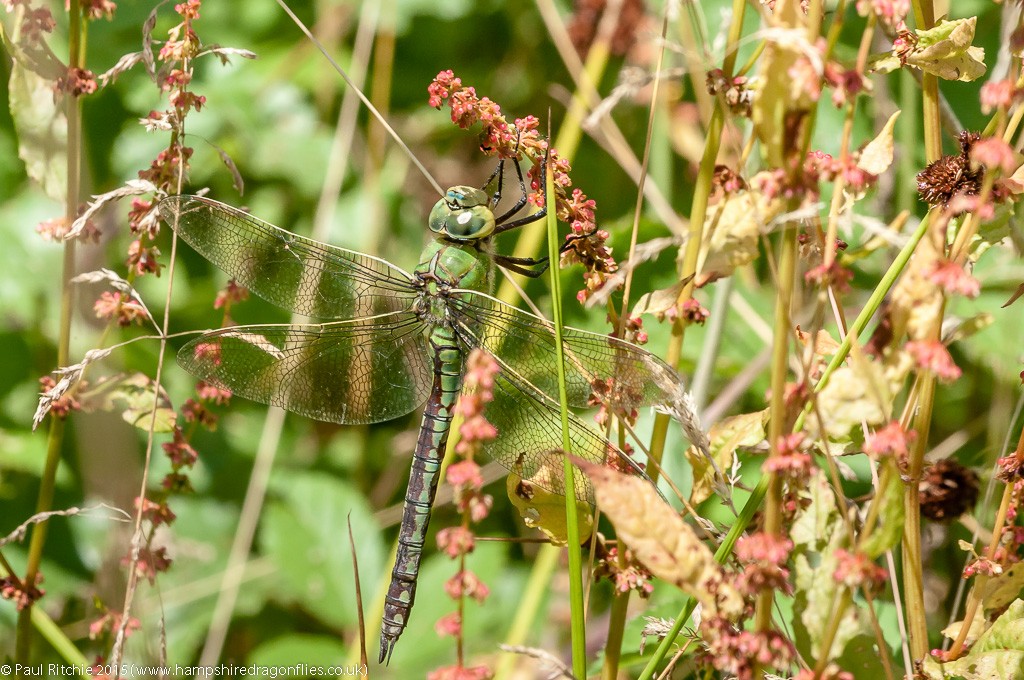
We didn’t encounter any Southern Hawkers today, but we didn’t really care. We had everything we needed right here.
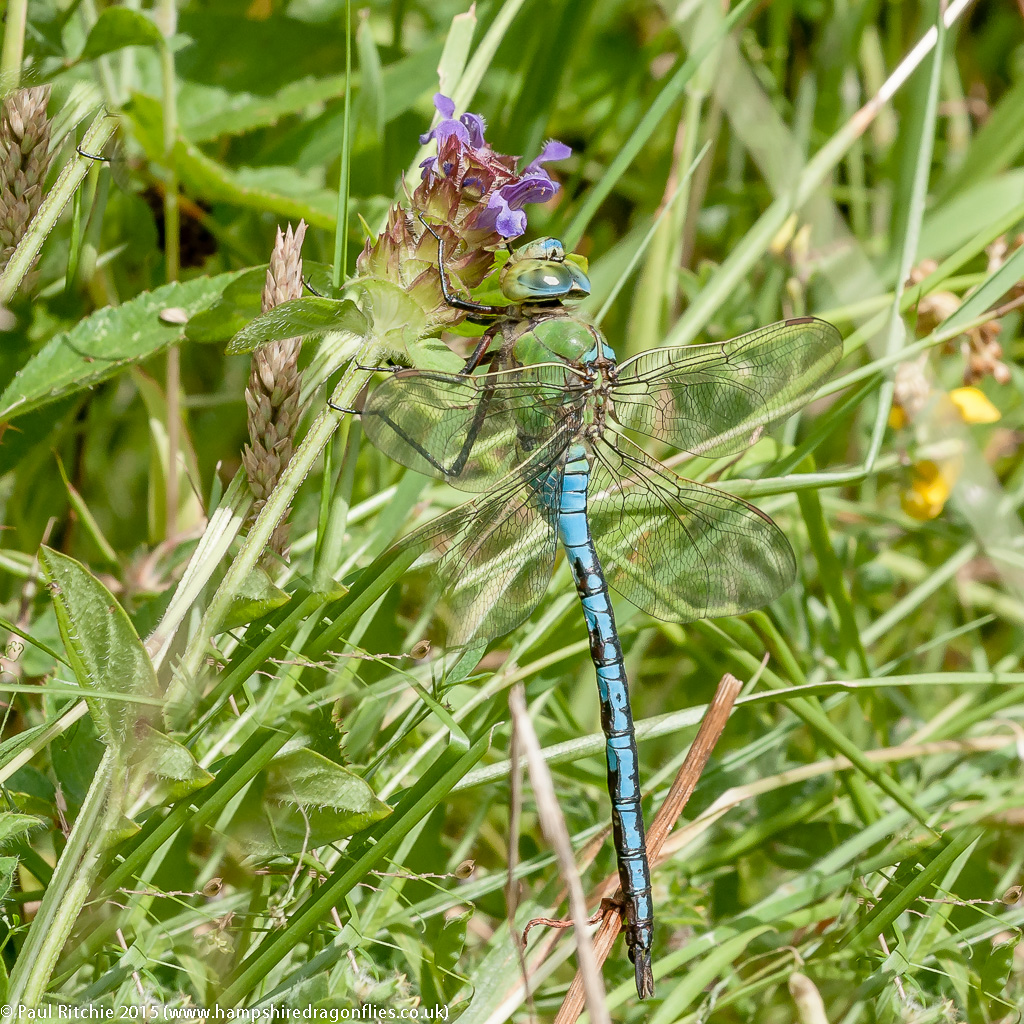
When your (once) favourite pond is dry, and weather & time doesn’t warrant a long journey, a local meadow can provide all you really need.
